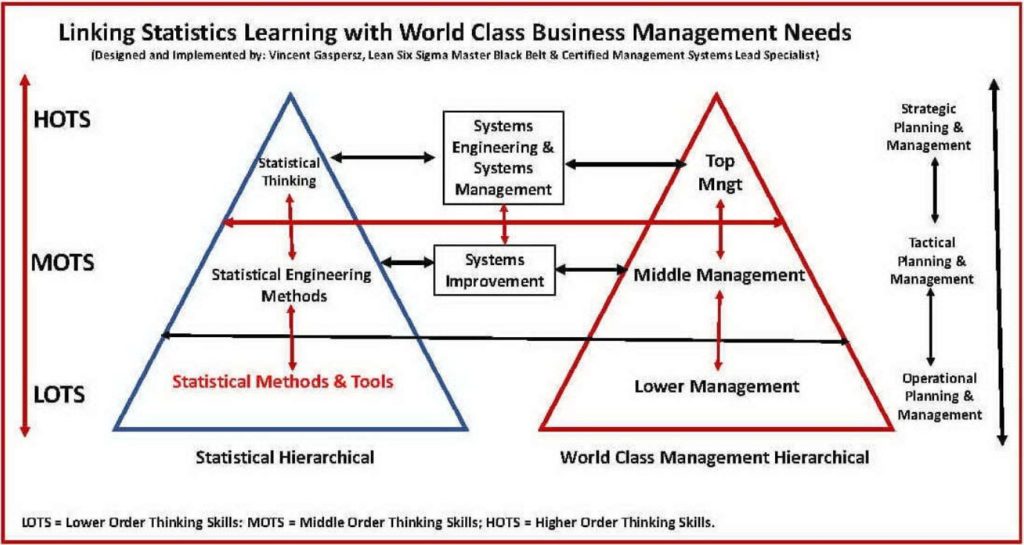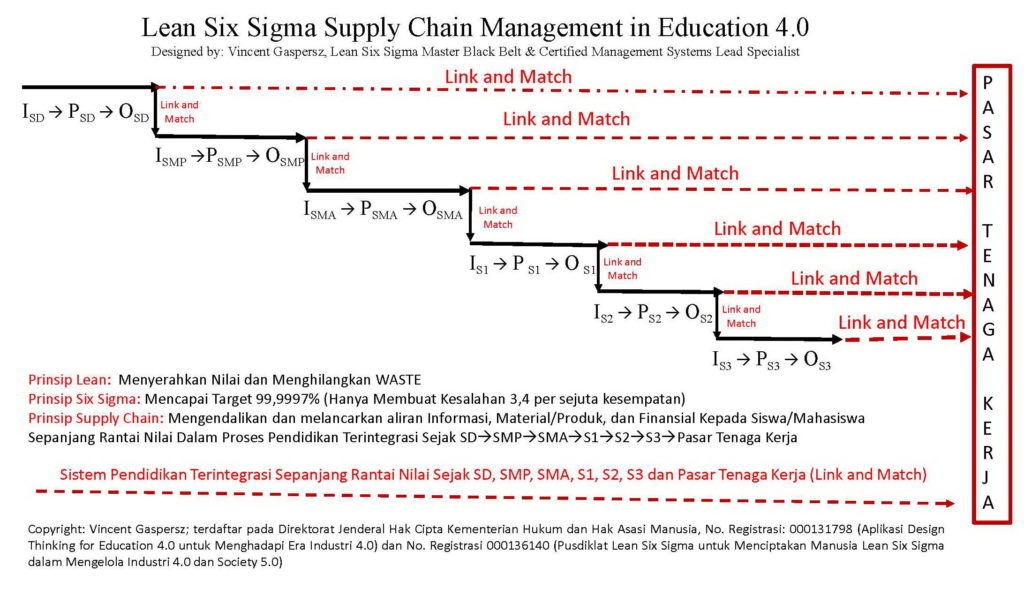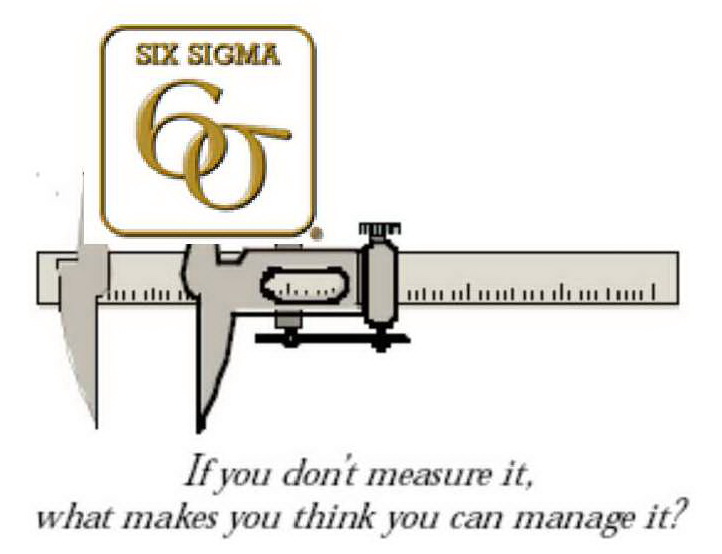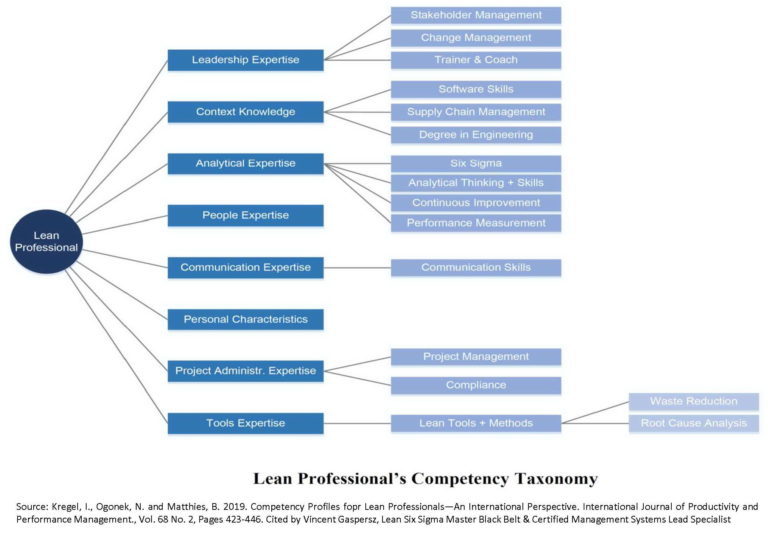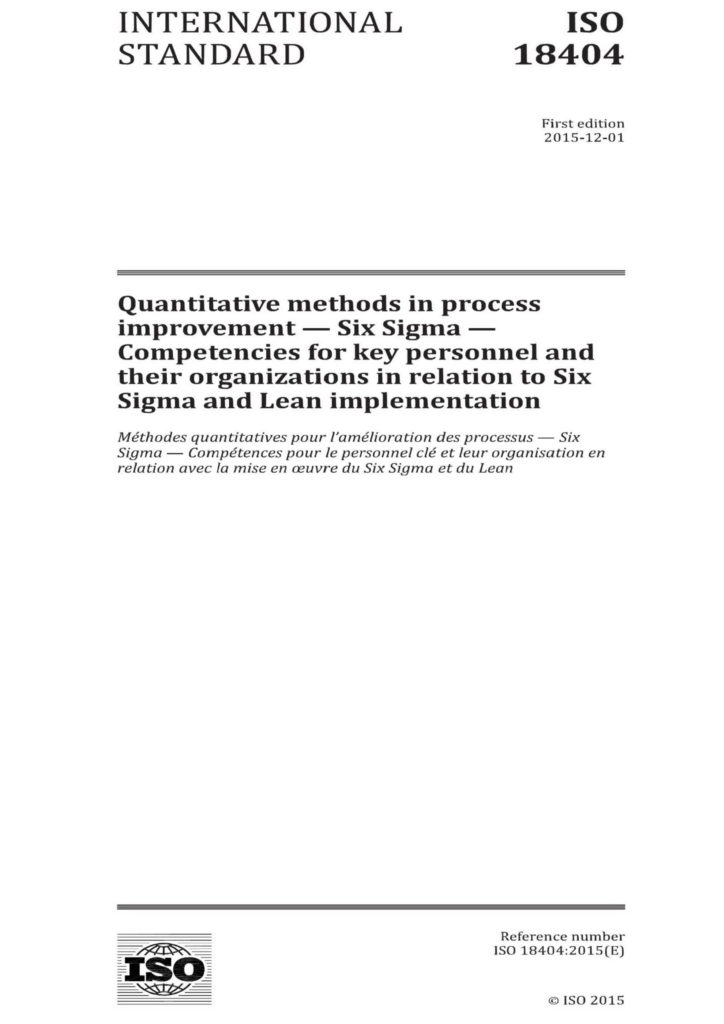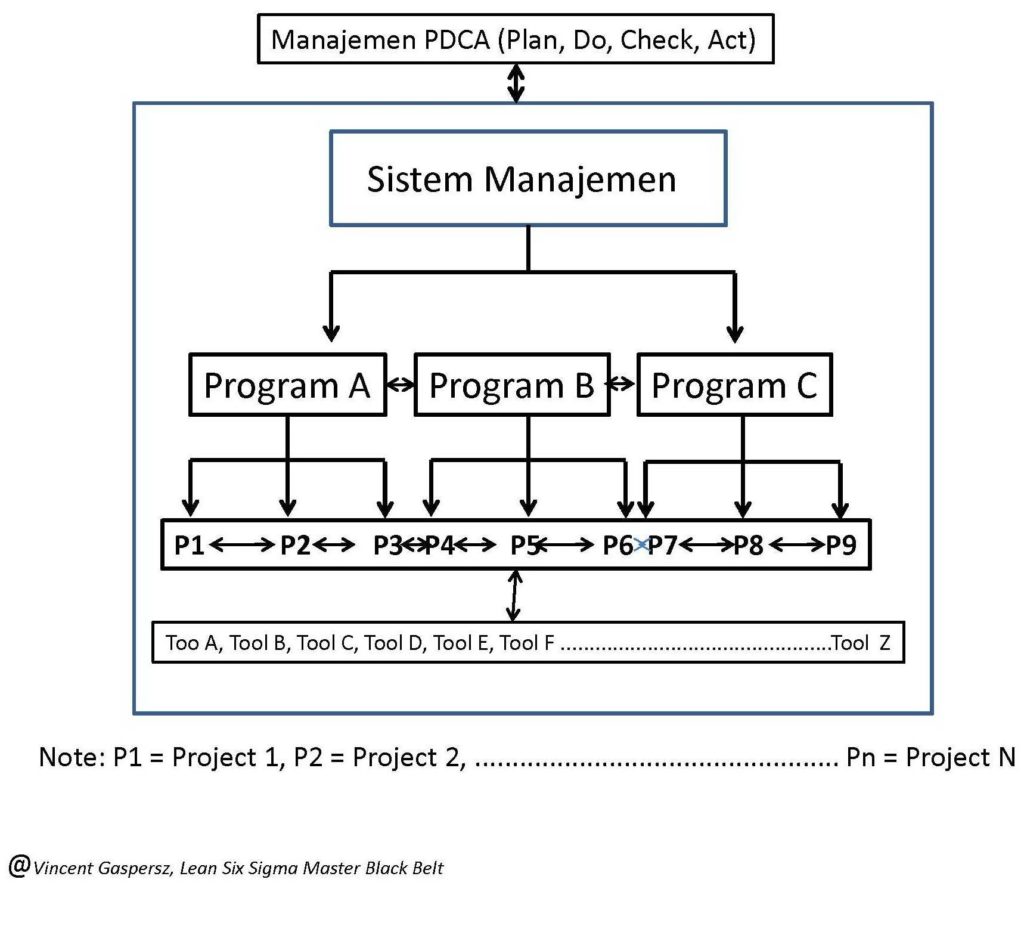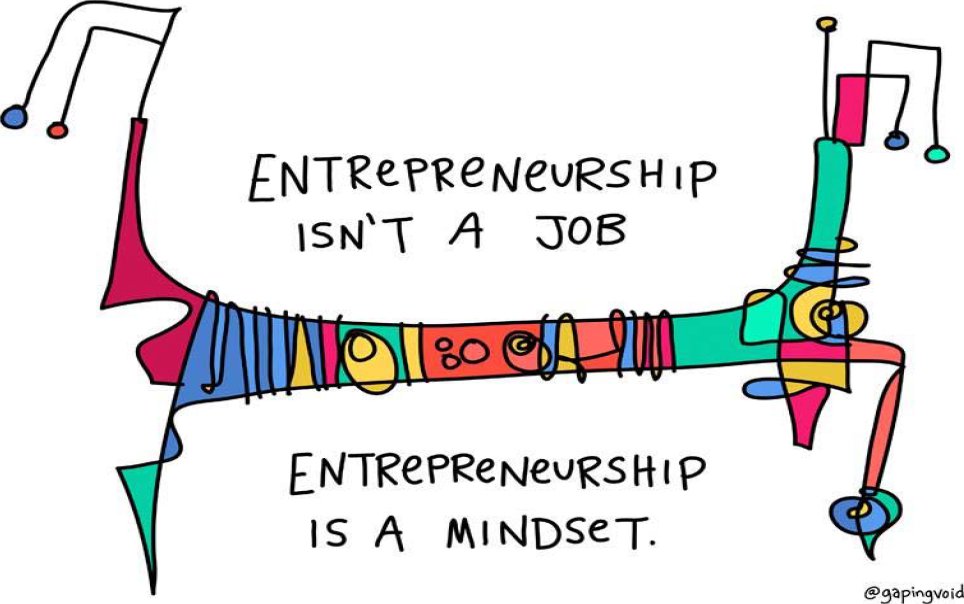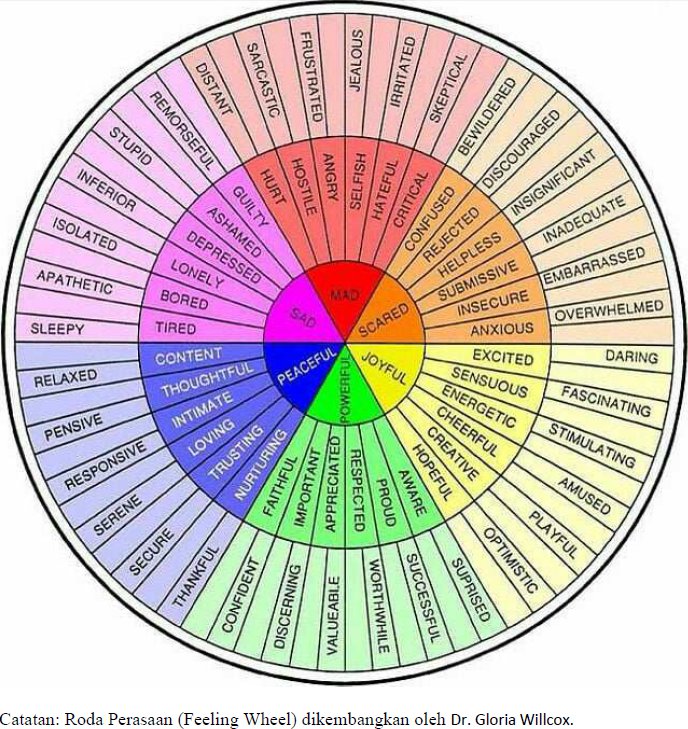-
Bahasa Indonesia
-
English
Oleh: Vincent Gaspersz,
Lean Six Sigma Master Black Belt (Praktisi Teknik Sistem dan Manajemen Industri),
APICS CFPIM (Certified Fellow in Production and Inventory Management),
CSCP (Certified Supply Chain Professional),
ASQ CMQ/OE (Certified Manager of Quality/Organizational Excellence),
CQE (Certified Quality Engineer),
CQA (Certified Quality Auditor),
CSSBB (Certified Six Sigma Black Belt),
Exemplar Global (RAB-QSA),
CMSP (Certified Management System Practitioneer)
Taksonomi Bloom yang diperbaharui (2001) membagi level pembelajaran ke dalam enam tingkat di mulai dari yang paling rendah sampai paling tinggi, yaitu: (1) Mengingat (Remembering), (2) Memahami (Understanding), (3) Menerapkan (Applying), (4) Menganalisis (Analyzing), (5) Mengevaluasi (Evaluating), dan (6) Menciptakan (Creating). Level 1 dan 2 sering dikategorikan sebagai Lower Level Thinking Skills, sedangkan Level 3, 4, 5, 6 dikategorikan sebagai Higher Level Thinking Skills.
Menggunakan pendekatan Taksonomi Bloom di atas, maka manajemen sistem dapat juga dibagi ke dalam tiga tahap, yaitu: (1) Desain Sistem berdasarkan konsep-konsep dan teori sistem (Level 1: Mengetahui Teori Sistem dan Level 2: Memahami Teori Sistem), (2) Implementasi Sistem (Level 3: Menerapkan Sistem, Level 4: Menganalisis Sistem, Level 5: Mengevaluasi Sistem), dan (3) Perbaikan Sistem (Level 6: Meningkatkan Kinerja Sistem/Mendesain Ulang Sistem/Menciptakan Sistem Baru, dll).
Seseorang yang hanya berada pada level 1 dan 2 dari Taksonomi Bloom meskipun yang bersangkutan telah membaca dan memahami 100-an buku tentang Manajemen Sistem NAMUM belum pernah menerapkan manajemen sistem (Tahap 2 dari Manajemen Sistem) tidak layak dianggap memiliki kompetensi dalam manajemen sistem. Konsekuensinya yang bersangkutan seumur hidup HANYA memahami teori-teori tentang manajemen sistem saja. Seorang profesor doktor sekalipun jika TIDAK pernah melewati tahap 2 yaitu Implementasi Manajemen Sistem PASTI tidak akan memiliki kompetensi dalam Aplikasi, Analisis, dan Evaluasi terhadap manajemen sistem. Tentu saja tidak mungkin akan mencapai tahap perbaikan manajemen sistem (Tahap 3: Perbaikan Sistem) yang merupakan Level tertinggi dalam pembelajaran menurut Taksonomi Bloom.
Dalam Bagan Terlampir ditunjukkan bahwa mengetahui dan memahami teori apapun (Level 1 dan 2 dari Taksonomi Bloom) akan percuma, jika teori-teori itu HANYA diulang-ulang dan diturunkan dari generasi satu ke generasi berikut yang masih banyak terjadi di dunia perguruan tinggi di Indonesia, di mana para dosen HANYA berorientasi pada tugas membaca dan mengajarkan buku-buku teks kepada mahasiswa. Suatu teori baru akan bermanfaat apabila teori itu diuji di lapangan melalui aplikasi teori itu (Level 3 Taksonomi Bloom), menganalisis relevansi teori itu menggunakan metodologi dan statistical thinking and tools (Level 4), mengevaluasi validitas teori itu (Level 5 Taksonomi Bloom), dan Menciptakan teori baru atau melengkapi teori yang ada sehingga menjadi up-to-date (Level 6 dari Taksonomi Bloom). Hal ini menjelaskan mengapa seorang dosen yang bergelut dalam penelitian-penelitian ilmiah memiliki kompetensi yang lebih tinggi daripada dosen yang bergelut dalam mengajarkan buku-buku teks saja.
Dalam Manajemen Sistem juga berlaku hal-hal di atas, di mana seorang PRAKTISI yang menerapkan sistem yang telah didesain berdasarkan konsep-konsep dan teori-teori sistem, kemudian melakukan analisis, evaluasi, dan perbaikan kinerja sistem akan memiliki kompetensi yang jauh lebih unggul daripada mereka yang hanya memahami teori (PAKAR) saja. PRAKTISI di sini BUKAN ditujukan kepada mereka yang asal menerapkan manajemen sistem berdasarkan pendekatan “trial and error” TETAPI ditujukan kepada mereka yang mampu mendesain sistem berdasarkan konsep-konsep dan teori sistem, kemudian menerapkan dan memperbaiki kinerja dari manajemen sistem itu.
Demikian sekilas memahami manajemen sistem berdasarkan enam tahap pembelajaran dari Taksonomi Bloom.
Untuk tujuan pembelajaran dan berbagi pengetahuan serta pengalaman praktis, maka saya akan mengklarifikasi serta menjelaskan mengapa saya menggunakan pendekatan taksonomi Bloom dalam memudahkan penjelasan tentang manajemen sistem?
Dalam dunia praktek telah terbiasa kita menggunakan berbagai pendekatan untuk memudahkan dalam pemahaman atau penjelasan tentang sesuatu fenomena, meskipun seringkali hal itu menjadi tidak nyaman bagi para akademisi yang tidak bergelut dalam dunia praktek. Jangankan hanya sekedar keliru, sedangkan dengan konsep dan teori yang salah saja bagi praktisi akan terus dipraktekkan, karena praktisi meyakini bahwa meskipun menggunakan teori yang salah yang penting diterapkan dahulu, nanti perbaikan akan dilakukan setelah ada hasilnya. AFTA = Action First Talk After (PRAKTISI), NATO = No Action Talk Only (PAKAR).
Siapa yang menyangka bahwa metodologi Six Sigma yang sangat populer sekarang ini dibangun berdasarkan konsep dan teori statistika yang SALAH? Praktisi yang menerapkan pertama kali metodologi pengendalian statistikal six sigma di perusahaan Motorola menyatakan bahwa dengan pengendalian statistikal akan membuat kesalahan sebesar: 3,4 per satu juta kemungkinan (3,4 DPMO = 3,4 defects per million opportunities) padahal menggunakan konsep dan teori statistika yang benar seharusnya pengendalian statistikal six sigma (dengan asumsi-asumsi kurva normal STANDAR Z berlaku, yaitu: rata-rata populasi nol dan variance sebesar sigma-kuadrat) maka tingkat kesalahan seharusnya hanya: 0,002 dpmo (defects per million opportunities). Pada tahap awal kemunculan metodologi pengendalian statistikal Six Sigma ini sekitar akhir 1980-an terjadi banyak perdebatan dan ketidaksetujuan dari para pakar teori statistika, terutama terhadap asumsi yang diajukan praktisi bahwa terjadi pergeseran nilai rata-rata populasi menggunakan kurva normal STANDAR dari nol menjadi: plus-minus 1,5 sigma, sehingga menghasilkan 3,4 dpmo. Tambah ngawur lagi asumsi yang diajukan oleh para praktisi dan sampai sekarang pakar teori statistika TETAP tidak mau menerima metodologi pengendalian statistikal enam sigma. Mereka hanya mau menerima metodologi pengendalian statistikal 3-sigma saja.
Tetapi siapa yang peduli dengan argumen pakar dari dunia akademik yang hanya bergelut dengan teori-teori statistika TANPA berusaha membuktikan teori itu di lapangan karena TAKUT SALAH atau takut dikritik orang lain? Kita bisa lihat perkembangan metodologi Six Sigma yang sangat populer sekarang ini dengan masih menggunakan asumsi-asumsi yang SALAH. Mengapa demikian? Karena para praktisi hanya melihat manfaat ekonomis yang diterima sangat-sangat besar. Perusahaan General Electric sangat maju pesat di seluruh dunia karena menggunakan metodologi Six Sigma yang SALAH itu. Ribuan perusahaan dan jutaan orang TIDAK PEDULI dengan asumsi yang SALAH itu dan terus menggunakan konsep dan aplikasi yang dianggap “ngawur” karena menyatakan bahwa pengendalian statistikal enam sigma menghasilkan kesalahan 3,4 dpmo (asumsi-asumsi kurva normal standar SALAH) BUKAN 0,002 dpmo (asumsi-asumsi kurva normal standar benar).
Jika kita mengetik kata-kata kunci: produk-produk industri GAGAL yang sukses luar biasa (menggunakan google search) maka akan diketahui banyak sekali produk GAGAL yang berhasil spektakuler dalam pemasaran.
Jika kita memahami SDLC (System Development Life Cycle), maka tidak akan memperdebatkan tentang aplikasi kreativitas dalam pengembangan awal suatu sistem itu. SDCL terdiri dari serangkaian tahap, sebagai berikut:
- Initial Idea
- Feasibility study
- Requirements analysis
- Systems analysis
- Specification
- Systems design
- Development
- Testing
- Implementation
- Maintenance
- Review
Sumber: http://thedynamicdomain.com/systems-development-life-cycle.aspx
Untuk memudahkan pemahaman (meskipun mungkin dianggap ngawur), saya mengelompokan tahap 1-8 sebagai: tahap desain sistem (praktisi lain menggunakan terminologi pre-design, desain awal yang masih banyak kelemahan, dll), tahap 9-10 sebagai tahap implementasi sistem, dan tahap 11 sebagai tahap perbaikan sistem (review, redesain, dll). Tidak perlu takut salah untuk mereka yang bergelut dalam dunia praktek terutama manajemen sistem, karena ada mekanisme umpan-balik dalam sistem yang dikenal dengan tahap perbaikan (review, redesign, dll).
Taksonomi Bloom sendiri masih banyak dikritik orang TETAPI siapa yang peduli jika hal itu bisa digunakan untuk memudahkan dalam proses-proses kreativitas? Mungkin ada banyak pendapat yang menyatakan bahwa tahap 1-2 dari taksonomi Bloom belum membutuhkan kreativitas? Dan kreativitas hanya ada dalam tahap 6: menciptakan? Sehingga desain awal sistem harus berada di tahap 6: menciptakan? TETAPI menurut pandangan saya pribadi (masih dapat diperdebatkan) bahwa kreativitas HARUS ada dalam semua tahap 1-6 dari taksonomi Bloom itu. Bayangkan seorang pembelajar pemula yang TIDAK kreatif, maka akan sulit sekali memahami suatu ilmu pengetahuan (tahap 1-2). Jika ia kesulitan belajar dalam tahap 1-2, bagaimana mungkin dia akan MAMPU melewati tahap 3, 4, 5, dan 6 itu? INISIATIF saya berpindah dari mempelajari bidang ilmu peternakan (sarjana peternakan) ke bidang ilmu teknik sistem dan manajemen industri (doktor teknik sistem dan manajemen industri) TIDAK MUNGKIN akan SUCCESS seperti sekarang ini, jika saya masih memiliki sifat-sifat penghambat seperti: TIDAK KREATIF, TAKUT SALAH, TAKUT DISEBUT NGAWUR, DLL.
Tentang pentingnya faktor KREATIVITAS bagi seorang praktisi manajemen sistem dan bagaimana keterkaitan dengan INOVASI akan saya bahas kemudian setelah klarifikasi terhadap penjelasan ngawur saya tentang memahami manajemen sistem menggunakan taksonomi Bloom.
Catatan: taxonomi Bloom juga banyak dikritik orang para pakar, TETAPI jika kita takut disebut ngawur (takut salah, dll), maka kita tidak akan maju-maju.
Teringat saya dahulu ketika masih menjadi sopir angkutan kota (bemo) di Kupang NTT, mungkin masih terjadi sampai sekarang di Kupang, bahwa sebutan untuk angkutan kota adalah BEMO. Tahukah kita bahwa BEMO berasal dari singkatan: Becak Motor (sejenis angkutan umum beroda tiga)? Apakah gara-gara SALAH penyebutan nama angkutan kota dengan BEMO di Kupang, lalu saya sebagai seorang ahli tata bahasa Indonesia yang 100% selalu menggunakan bahasa Indonesia TANPA salah akan menyatakan: ah saya tidak mau naik angkutan kota bernama BEMO (beroda empat, seharusnya beroda tiga), karena menurut terminologi bahasa Indonesia yang benar, kata BEMO (Becak Motor) itu adalah jenis angkutan umum lain yang beroda tiga.
Dahulu sebagai sopir “BEMO” di Kupang saya juga tertawa dalam hati ketika kondektur sering disebut KONJAK. Tahukah kita bahwa KONJAK = Kondektur Jakarta? He he banyak KONJAK ada di Kupang.
Analogi ngawur ini juga boleh dijadikan bahan refleksi.
Bagi mereka yang senang hal-hal praktek dan TIDAK takut SALAH bisa membaca buku: Creativity and Innovation for Managers berikut:
http://gen.lib.rus.ec/book/index.php?md5=ae70f2e1534d61e5c27b68527616a939
Berdasarkan pendekatan sistem: Input – Process – Output, maka CREATIVITY adalah berkaitan dengan ide-ide KREATIF (seringkali termasuk ide-ide NGAWUR) yang merupakan INPUT itu akan diproses agar menjadi INNOVATION (output dari ide-ide kreatif). CREATIVITY merupakan syarat perlu, TETAPI belum merupakan syarat CUKUP apabila ide-ide kreatif itu tidak diterapkan (diproses) untuk menghasilkan output berupa INNOVATION. Itu makanya manajemen sistem selalu menggunakan feedback berupa: continual imporovement and innovation agar sistem bisa ditingkatkan atau diperbaiki terus-menerus sehingga menjadi: better, faster, cheaper, stronger, smarter, dll.
Dengan cara-cara berpikir ngawur, saya setelah membaca Bible dan memahami berbagai ayat kitab suci termasuk seperti: Matius 10:7-8 yaitu: Pergilah dan beritakanlah: Kerajaan Sorga sudah dekat.Sembuhkanlah orang sakit, bangkitkanlah orang mati; tahirkanlah orang kusta; usirlah setan-setan. Kamu telah memperolehnya dengan cuma-cuma, karena itu berikanlah pula dengan cuma-cuma. Kemudian mengumpulkan orang-orang sakit untuk disembuhkan oleh Tuhan dan telah puluhan ribu orang yang memperoleh mujizat Tuhan itu. Banyak orang termasuk isteri saya menyatakan bagaimana kalau tidak terjadi apa-apa dalam kerumunan orang-orang sakit itu! Saya hanya menjawab ah itu bukan masalah saya, jika Tuhan tidak menyembuhkan mereka, maka berarti Tuhan yang akan malu karena firman Tuhan dalam Matius 10:7-8 menjadi tidak berlaku! Agar diketahui segala bentuk ketakutan merupakan keraguan kepada Tuhan yang berarti melanggar ayat 2 Timotius 1:7 karena Tuhan tidak pernah mau bergaul dengan orang-orang penakut. Ternyata aneh juga apa yang saya lakukan dengan modal nekat serta ide-ide ngawur bisa SUCCESS. Puji Tuhan karena sekarang telah bergaul akrab dengan Tuhan.
Salam SUCCESS keluar dari perangkap mental: ragu-ragu, takut salah, takut risiko, takut dianggap ngawur, dll.
Understanding Systems Management Using Bloom’s Taxonomy Approach
By: Vincent Gaspersz,
Lean Six Sigma Master Black Belt (Praktisi Teknik Sistem dan Manajemen Industri),
APICS CFPIM (Certified Fellow in Production and Inventory Management),
CSCP (Certified Supply Chain Professional),
ASQ CMQ/OE (Certified Manager of Quality/Organizational Excellence),
CQE (Certified Quality Engineer),
CQA (Certified Quality Auditor),
CSSBB (Certified Six Sigma Black Belt),
Exemplar Global (RAB-QSA),
CMSP (Certified Management System Practitioneer)
The renewed Bloom’s Taxonomy (2001) divides the level of learning into six levels from the lowest to the highest, which are: (1) Remembering, (2) Understanding, (3) Applying, (4) Analyzing, (5) Evaluating, and (6) Creating. Level 1 and 2 are often categorized as Lower Level Thinking Skills, whereas Level 3, 4, 5, and 6 are categorized as Higher Level Thinking Skills.
Using the above Bloom’s Taxonomy approach, then systems management can also be divided into three phases, which are: (1) Systems Design based on systems concepts and theory (Level 1: Knowing Systems Theory and Level 2: Understanding Systems Theory); (2) Systems Implementation (Level 3: Implementing Systems, Level 4: Analyzing Systems, Level 5: Evaluating Systems); and (3) Systems Improvement (Level 6: Increasing Systems Performance/Redesigning Systems/Creating New Systems, etc.).
Someone who is only at level 1 and 2 of Bloom’s Taxonomy, even though he/she has read and understood a hundred of books about Systems Management, BUT has not implemented systems management (Phase 2 of Systems Management), is not worthy to be considered to have competency in systems management. Consequently, that person in his/her lifetime ONLY understand mere theories about systems management. Even a doctorate professor if he/she NEVER passes the phase 2, which is Systems Management Implementation, SURELY will not have the competency in Application, Analysis, and Evaluation toward systems management. It is obviously impossible for him/her to achieve the systems management improvement (Phase 3), which is the highest level in learning according to Bloom’s Taxonomy.
The chart above shows that knowing and understanding whatever theories (Level 1 and 2 of Bloom’s Taxonomy) will be useless if those theories are ONLY repeated and passed down from one generation to the next; of which still occurs in the higher education world in Indonesia, where lecturers are ONLY oriented on the tasks of reading and teaching textbooks to students. A theory will start to be useful if that theory is tested in the field through: implementing that theory (Level 3 Bloom’s Taxonomy); analyzing that theory’s relevance by using methodology, statistical thinking and tools (Level 4); evaluating that theory’s validity (Level 5 Bloom’s Taxonomy); and creating new theory or complementing the existing theory to make it up-to-date (Level 6 of Bloom’s Taxonomy). This explains why a lecturer who is involved in scientific research has higher competency than a lecturer who is involved in teaching just textbooks.
In Systems Management, the above things also apply, where a PRACTITIONER who implements a system that has been designed based on systems concepts and theories, and then analyzes, evaluates, and improves systems performance will have far more superior competency than those who just understand theories (EXPERTS). PRACTITIONER here IS NOT addressed to those who carelessly implement systems management based on “trial and error” approach; BUT is addressed to those who are able to design systems management based on systems concepts and theories, and then to implement and improve performance of that systems management.
Thereby, a glance in understanding systems management based on six phases of learning of Bloom’s Taxonomy.
For the purpose of learning and sharing knowledge as well as practical experience, then I will clarify and explain why I use Bloom’s taxonomy approach in facilitating the explanation about systems management.
In the practical world, we have been used to using various approach to facilitate in understanding or explaning about a phenomenon, although it often makes it uncomfortable for the academics who are not involved in the practical world. Let alone being merely mistaken, even with the wrong concept and theory, the practitioners will keep applying it; because practitioners believe that even though using the wrong theory, the most important thing is to apply it first, later the improvement will be done after there is result. AFTA = Action First Talk After (PRACTITIONER), NATO = No Action Talk Only (EXPERT).
Who would’ve thought that the currently very popular Six Sigma methodology is built based on the WRONG statistical concept and theory? The practitioner who first implemented the statistical control methodology of Six Sigma at Motorola stated that with statistical control, it would create error of: 3.4 DPMO = 3.4 defects per million opportunities. Whereas by using the correct statistical concept and theory, the statistical control of six sigma (with Z-STANDARD applied normal curve assumptions, which are: 0 population average and sigma-square variance) should produce the level of errors of only: 0.002 dpmo (defects per million opportunities). In this early stages of the emergence of Six Sigma statistical control methodology around the late 1980s, there were many debates and disagreements from statistical theory experts, especially on the assumption proposed by the practitioners that there was shift in population average using STANDARD normal curve from 0 into: plus-minus 1.5 sigma; thus producing 3.40 dpmo. Even more inconsequential was the assumption that was proposed by some practitioners and until now some statistical theory experts STILL do not want to accept statisical control methodology of six sigma. The latter only want to accept the statisical control methodology of just three-sigma.
But who cares with experts’ arguments from academic world who are only involved in statistical theories WITHOUT trying to prove those theories in the field because they are AFRAID to be WRONG or to be criticized by others? We can see the development of Six Sigma methodology that is very popular nowadays by still using the WRONG assumptions. Why is that so? Because practitioners only see the economic benefits received are very great. General Electric company has been very highly developed worldwide because of using that WRONG Six Sigma methodology. Thousands of companies and millions of people DO NOT CARE about that WRONG assumption and keep using the concept and application that are considered “inconsequential” because it states that six sigma statistical control only produces 3.40 dpmo (WRONG normal curve assumptions) NOT 0.002 dpmo (correct normal curve assumptions).
If we search for FAILED industrial products that went on to be extraordinarily successful (using Google search), then there are actually a lot of FAILED products that became spectacularly successful in marketing.
If we understand SDLC (System Development Life Cycle), then we won’t argue about the application of creativity in that early development of a system. SDLC comprises of a series of phases, as follows:
- Initial Idea
- Feasibility study
- Requirements analysis
- Systems analysis
- Specification
- Systems design
- Development
- Testing
- Implementation
- Maintenance
- Review
Source: http://thedynamicdomain.com/systems-development-life-cycle.aspx
To facilitate understanding (even though perhaps it will be considered inconsequential), I group phases 1-8 as: systems design phase (other practitioners use pre-design terminology, early design with a lot of weaknesses, etc.); phases 9-10 as: systems implementation phase; and phase 11 as systems improvement phase (review, redesign, etc.). There is no need to fear, for those who are involved in practical world of especially systems management, because there is a feedback mechanism in systems that is known as improvement phase (review, redesign, etc.).
Bloom’s Taxonomy itself is still widely criticized; BUT who cares if it can be used to facilitate in creativity processes? Perhaps there are many opinions that state phase 1-2 of Bloom’s taxonomy do not need creativity yet, and creativity only exists in phase 6: creating; therefore, early systems design must be in phase 6: creating. Imagine a beginner/learner who is NOT creative who has very hard time understanding a scientific knowledge (phase 1-2). If he struggles to learn in phase 1-2, how would he be possibly ABLE to pass those phases 3, 4, 5, and 6? My INITIATIVE on moving from learning the field of animal husbandry (a livestock bachelor) into the field of systems engineering and industrial management (a doctorate in systems engineering and industrial management) WOULD NOT be POSSIBLE if I had inhibiting characters such as: UNCREATIVE, AFRAID TO BE WRONG, AFRAID TO BE CALLED INCONSEQUENTIAL, ETC.
About the importance of CREATIVITY factor for a systems management practitioner and how it relates to INNOVATION will be examined later after the clarification to my inconsequential explanation about understanding systems management using Bloom’s taxonomy.
Note: Bloom’s taxonomy is also widely criticized by practitioners; BUT if we are afraid to be called inconsequential (afraid to be wrong, etc.), then we will not progress further.
I remember when I was still a minibus (bemo) driver in Kupang, NTT. Perhaps still happens even today in Kupang, that the term for minibus is BEMO. Do you know that BEMO abbreviation stand for: Becak Motor // Motorized Pedicab (a kind of three-wheeled public transportation)? Would it because of the WRONGFUL term of city transportation with BEMO in Kupang, then I, as an Indonesian grammarian who 100% always use Indonesian language PERFECTLY will state: “Ah, I do not want to ride city transportation called BEMO (that has four wheels; but should be three wheels), because according to the correct Indonesian language terminology, the word BEMO (Becak Motor // Motorized Pedicab) means the other kind of three-wheeled public transportation.
Formerly as a “BEMO” // Minibus driver in Kupang, I also laughed secretly when conductor were often called KONJAK. Do you know that KONJAK = Kondektur Jakarta // Conductor in Jakarta? There were many KONJAKs in Kupang apparently.
This inconsequential analogy may also be used as a reflection material.
For those who are interested in practical things and NOT afraid to be WRONG, can read the following Creativity and Innovation for Managersbook:
http://gen.lib.rus.ec/book/index.php?md5=ae70f2e1534d61e5c27b68527616a939
Based on systems approach: Input – Process – Output, then CREATIVITY relates to CREATIVE ideas, (often including INCONSEQUENTIAL ideas) which are that INPUT, that will be processed into INNOVATION (output of creative ideas). CREATIVITY is a necessary requirement, BUT is not a SUFFICENT requirement if those creative ideas are not applied (processed) to produce the output in the form of INNOVATION. For that reason, systems management always uses feedback in the forms of: continual improvement and innovation in order to continually increase or improve the systems to be: better, faster, cheaper, stronger, smarter, etc.
With inconsequential ways of thinking, after I have read Bible and understood various biblical verses such as: Matthew 10:7-8, which are: “And proclaim as you go, saying, ‘The kingdom of heaven is at hand.’ Heal the sick, raise the dead, cleanse lepers, cast out demons. You received without paying; give without pay.”, I then gathered sick persons to be healed by God and there has been tens of thousands of people who have received that divine miracle. Many people, including my wife, asked what if nothing would happen in the crowd of those sick persons? I only answered, “Ah, that is not my problem; if God does not heal them, then it means God who would be embarassed because God’s Word in Matthew 10:7-8 becomes not applicable! It is to be known that all forms of fear mean doubting God which means breaking the verse of 2 Timothy 1:7 because God never wants to associate with fainthearted people. It is actually strange that what I had done with recklessness as well as with inconsequential ideas could be SUCCESSFUL. Thank Gof because I have familiarly associate with God.
Best Regards for SUCCESSFULLY escape out of the mental traps: doubtful, afraid to be wrong, afraid of risk, afraid to be considered inconsequential, etc.

